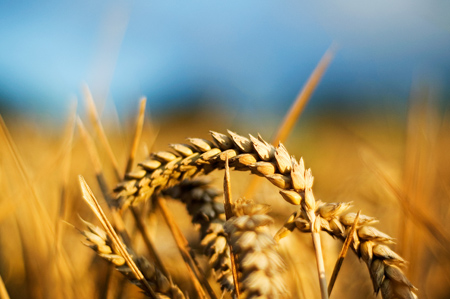US Wheat Area for 2018 to Hit ‘All-Time Low’, Says IGC
Category: Grains
 (Agrimoney) – The International Grains Council trimmed hopes for world wheat area for 2018 before most of it has even been planted, citing weakened prospects for the US – where area will hit “an all-time low”.
(Agrimoney) – The International Grains Council trimmed hopes for world wheat area for 2018 before most of it has even been planted, citing weakened prospects for the US – where area will hit “an all-time low”.
The intergovernmental group, updating its wheat outlook for 2018, said that area was, on a harvested basis, “projected to be fractionally lower” year on year.
The forecast contrasted with an estimate last month that a “modest area expansion is anticipated”, encouraged by a rise in prices from year-ago levels, although with the grain’s appeal curbed by returns which “are still unattractive for many producers”.
While details on the IGC’s forecasts are scant, one signal change was a weakened forecast for area expectations in the US, where weather setbacks to plantings have only diminished the crop’s appeal.
‘All-time low’
“Following overly dry conditions in September, recent rains were helpful for winter crop establishment in the US, but contributed to seeding delays,” the IGC said.
The US winter wheat sowings pace as of early October was one of the slowest on US Department of Agriculture records going back to 1996, ahead only of the progress in 2000, although farmers have since managed some catch-up.
“Due to relatively poor returns for both winter and spring varieties, all-wheat area is projected to drop to an all-time low,” the council said.
US sowings this year of 46.0m hectares were the lowest on USDA data going back to 1919, with harvested area of 37.6m hectares the smallest since 1890.
‘Slowest sowings on record’
The comments come amid some debate over prospects for US wheat sowings for the 2018 harvest, with an apparent market consensus on lower winter wheat plantings.
At broker Futures International, Terry Reilly said that “there is little incentive for US producers to expand the winter wheat area given poor economics and price relationships” with rival crops such as sorghum and corn.
Sowings of hard red winter wheat, as grown in the US Plains, where planting delays were most acute, have been seen as particularly likely to fall short, particularly as delays have been focused on Kansas, the top US wheat-growing state.
Kansas winter wheat sowings progress of 67%, as of Sunday, “remains the slowest progress for this week on record going back to 1982”, behind an average of 86%, said Tregg Cronin at Halo Commodity Company.
Many parts of Kansas have now passed the deadline for crop insurance, after which coverage falls at a rate of 1% per day.
Spring wheat area rebound?
Still, Futures International’s Mr Reilly added that US plantings of soft red winter wheat, as traded in Chicago as grown in the Midwest, “might be up a touch”, having seen less adverse seeding conditions.
Furthermore, there is a widespread expectation that at least some of the drop in US winter wheat sowings will be offset by gains in area of spring wheat, the type traded in Minneapolis.
“Almost all believe hard red spring wheat acres will be up next year,” Halo’s Tregg Cronin said, although adding that expectations of the size of the increase “wavered considerably once… futures fell below $7.00 a bushel in Minneapolis, and especially below $6.50”.
The September 2018 contract, a key signal for farmers on what returns to expect from next year’s harvest, stood at $6.36 a bushel in Minneapolis on Friday, although that remained more than $0.80 a bushel than the September 2017 lot was standing at a year ago.
Russian, EU prospects
The IGC stood by an expectation of wheat area in the European Union, the top grower, being “similar” in 2018 to that for the latest harvest.
However, it backed expectations of a rise in the former Soviet Union, particularly in focus given Russia’s record harvest this year, which is expected to propel it to top of the world wheat export league.
“Unseasonably dry weather continued in southern parts of Russia and Ukraine, where seeding was almost completed by late-October, a little faster compared to last year.
“With returns still attractive, winter area is projected to stay high and might slightly exceed the season before.”




